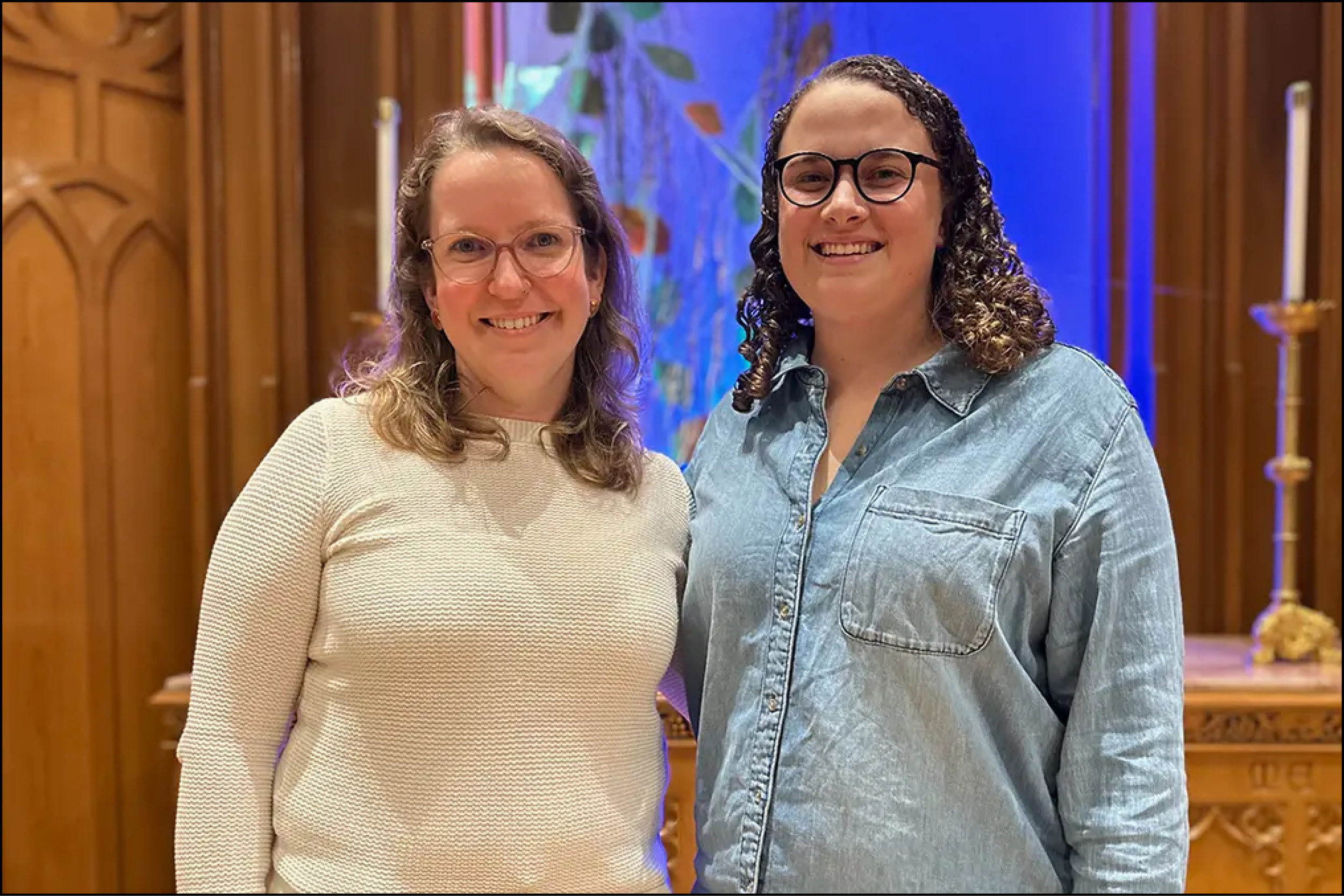Dear church,
I didn’t know women could be pastors until I was in college. That’s when I met my first woman pastor, Rev. Mary Hammond, a co-pastor of Oberlin Community Church in Oberlin, Ohio. Seeing Mary lead, preach, teach, and care for the small-and-mighty congregation, as well as a number of college students, was a turning point in my life, as I realized that a vocation I had never considered could be open to someone like me. Then, when I moved to Nashville, Tennessee for a volunteer year that quickly became an MDiv from Vanderbilt, I began attending Glendale Baptist Church, which was led by two women co-pastors, Rev. Dr. Amy Mears and Rev. April Baker. Watching (and then getting to intern with) these two women pastors who had different personalities and complementary gifts was incredibly powerful for me. I learned that there is more than one way to be a pastor, that leadership does not have to be top-down—and that being a woman in the pulpit comes with its own set of challenges, in addition to general pastoral tasks and expectations of the role.
The society we live in is shaped by patriarchy, and that trickles (or even floods?) into the institution of the church, as well. Part of how patriarchy shows up in church is by assuming men (and particularly white men) to be the norm—the norm of what a pastor looks like, what leadership looks like, and what being “a faithful Christian” looks like, what scriptures we read in the Bible and what stories we tell from the pulpit. Women in ministry often face challenges to how they preach and teach and officiate and provide pastoral care simply because they might do those things differently from men (!) But really, ALL pastors do these tasks differently. Another message society sends women is that women must compete: for respect, for love, for jobs, for leadership, for positioning closest to the center of power. And this shows up in the church, too (and of course, not just related to gender but related to race, class, ability, age, etc. as well). One gift of watching two women co-pastors work together was witnessing that they were different people with different identities and life experiences and gifts…and that neither one of them was “the REAL pastor” or “ACTUALLY in charge.” The co-pastor model, and particularly having women in these roles, resisted pitting one person against another.
In the 2018 study by Rev. Dr. Eileen Campbell-Reed entitled “State of Clergywomen in the U.S.: a statistical update,” it is shown that women make up only 13.1% of ordained clergy in the American Baptist Churches USA (the denomination to which this church belongs). Furthermore, women make up only 9.4% of pastors in ABCUSA. This is the almost the smallest percentage of women’s ordination and women pastors in mainline churches (only the Wesleyan tradition is smaller, and only just). (Trust me, you want to check out this report—it is interesting…and sobering). (Another note: the report specifically examines racial demographics, and they note that the study of LGBTQIA+ people in ministry lacks longevity, but they are working on it!) This church has been blessed with having multiple women on staff as clergy for many years. However, SFBC has never had a woman senior minister. And now, we will have two women co-pastors—and we are millennials, to boot! Even though we are a progressive congregation with a long history of supporting women in leadership, we must acknowledge that we are in a NEW time, and that there may be things to learn about how to speak, behave and respect these women in ministry.
And, within our Evergreen region and the larger ABCUSA denomination, we are doing something DIFFERENT and BOLD by calling two millennial women to serve in collaborative ministry. On the day we called Pastor Leigh, I was overcome with emotion because I knew the gravity of what the congregation was doing—September 17 was a historic day.
As Pastor Leigh and I begin our ministry as copastors, we anticipate there will be a learning curve— with us AND with you! Flattening any hierarchical structure within an established institution is a big challenge—and though that may seem like a lot of fancy words all strung together, it will be real as we face questions like: “Who is REALLY in charge?” “who do I call when I need pastoral care?” “who should I let know I or a loved one is in the hospital?” “who will be available to officiate at weddings and funerals?” and many more. The answers to these questions are: both of us! But we know it’ll take some getting used to, so we want to hear from you! What questions do you have about the co-pastor model? What are your hopes? What are your worries? Let us know! We are all in this together as we seek to be faithful to the Way of Jesus the Christ in this community, in this time and in this place.
I love you, and I love being your pastor,
—Rev. Anita
